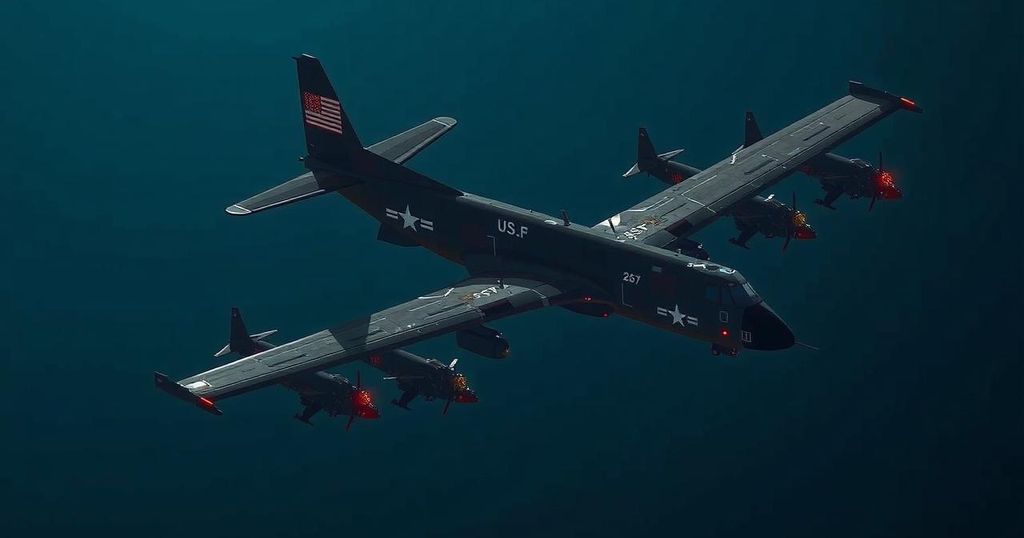China Monitors U.S. Military Aircraft in Taiwan Strait
Summary
On Tuesday, Chinese military jets tracked a U.S. military surveillance plane, the P-8A Poseidon, in the Taiwan Strait. The Chinese military claimed that its actions were in accordance with legal standards, emphasizing high alert for national security. This incident follows a series of international naval activities and reflects the persistent tensions over Taiwan’s status.
On Tuesday, Chinese military aircraft pursued a United States military surveillance plane through the highly sensitive Taiwan Strait, according to the official statement released by the People’s Liberation Army’s Eastern Theater Command. The aircraft involved was identified as a P-8A Poseidon, a reconnaissance plane equipped for long-range anti-submarine warfare operations. Senior Colonel Li Xi, spokesperson for the Eastern Theater Command, stated that Chinese military forces organized their warplanes to closely monitor and track the flight of the U.S. aircraft, assuring that actions were undertaken in compliance with legal standards. He emphasized, “Theater command troops will remain on constant high alert and resolutely safeguard national sovereignty and security as well as regional peace and stability.” The U.S. Navy has not provided commentary on this particular incident thus far. The context of this incident is underscored by China’s assertions regarding the self-governing island of Taiwan, which it claims as its territory, and the tension generated by the presence of foreign military forces in the waters that separate the island from mainland China. The situation has been further complicated by recent maritime movements, such as Germany’s recent deployment of two warships through the Taiwan Strait, marking the first passage of its vessels through these contentious waters in over twenty years, which has drawn criticism from Beijing. There is historical context to consider as well, as exemplified by the mid-air collision in 2001 between a U.S. surveillance aircraft and a Chinese fighter jet near Hainan Island, which resulted in the death of the Chinese pilot. The United States contended that its plane was operating within international airspace and attributed the incident to the reckless maneuvers of the Chinese pilot.
The Taiwan Strait, a critical maritime corridor, remains a focal point of military tension between China and the United States, particularly as it pertains to the status of Taiwan. The United States has maintained a policy of supporting Taiwan’s defense capabilities, often leading to military encounters between U.S. and Chinese forces in the area. The Taiwan Strait is not only a thoroughfare for strategic military operations but also a reminder of China’s assertive territorial claims and its opposition to foreign military presence close to its borders. The geopolitical significance of this strait has heightened the stakes for international maritime navigation and military engagement.
In summary, the incident involving Chinese warplanes tailing a U.S. reconnaissance aircraft through the Taiwan Strait underscores the ongoing military tensions in the region, particularly concerning China’s territorial claims over Taiwan. The situation is compounded by recent international naval activities and historical incidents that have shaped the current military landscape. The commitment of both nations to maintaining their respective security objectives continues to fuel the complexities of their interactions in this strategically vital region.
Original Source: www.voanews.com








Post Comment